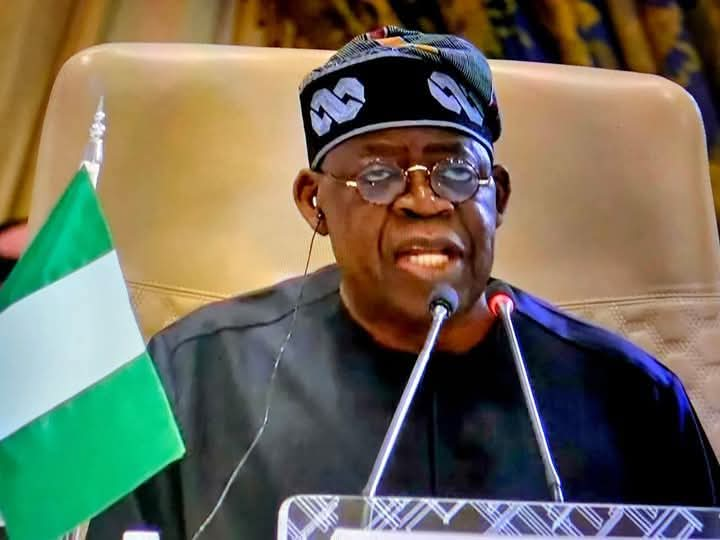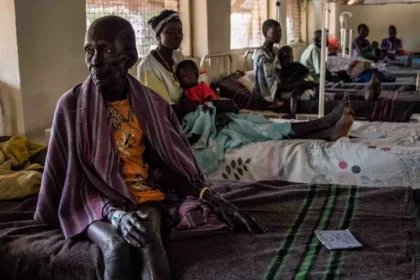By Adeyemi Adekunle
In northeastern Nigeria, a silent cry echoes through arid landscapes scarred by more than 15 years of violent insurgency, crippling poverty, and climate-induced devastation. On Thursday, Nigerian authorities and the United Nations Office for the Coordination of Humanitarian Affairs (OCHA) issued an urgent appeal for $910 million to confront a humanitarian crisis that has left millions on the brink.
The 2025 Humanitarian Needs and Response Plan, unveiled at U.N. House in Abuja, seeks to provide life-saving aid to 3.6 million people in Borno, Adamawa, and Yobe states—epicenters of the crisis perpetuated by the Boko Haram insurgency, widespread armed conflict, and economic instability.
“Humanitarian interventions are critical to saving lives, but they cannot resolve the underlying drivers of crises. The time to act decisively and collaboratively is now,” declared Mohammed Malick Fall, U.N. Resident Coordinator in Nigeria, during the launch.
Years of insurgency have ravaged Borno, Adamawa, and Yobe, tearing apart families, uprooting communities, and displacing millions. Today, more than 2.4 million people are internally displaced in the region. Makeshift camps spread across the area are overcrowded, with minimal access to resources, creating harsh realities for those seeking refuge.
Among these camps in Maiduguri, the capital of Borno State, lives 34-year-old Fatima Abubakar, who fled her village after it was overrun by Boko Haram fighters five years ago. “I lost my husband to the insurgents,” she said, her voice tinged with grief. “I now live in this camp with my four children. Each day is a fight for survival, trying to get enough food or clean water. It’s no life, but it’s better than death.”
Fatima’s story is heartbreakingly familiar in a region where basic survival has become a luxury. The 2025 Humanitarian Response Plan prioritizes food security, healthcare, education, and clean water, but the sheer scale of needs presents an enormous challenge.
The U.N. estimates that 33 million Nigerians—an alarming increase from 26.5 million in 2024—will face food insecurity in 2025 without immediate intervention. Of these, at least 2.5 million children are at risk of dying from severe acute malnutrition. With every passing day, the weight of inaction threatens to push communities closer to catastrophe.
“Every number we cite in this report represents a life—a child who goes to bed hungry, a woman giving birth without medical support, or a family surviving on the margins,” Fall noted solemnly.
Compounding the region’s challenges are climate shocks. In 2024, Nigeria experienced devastating floods that displaced hundreds of thousands, destroyed crops, and compounded already fragile livelihoods. As fields and infrastructure were submerged, families reliant on subsistence farming were left with nothing. For communities in the northeast, rebuilding was impossible—many had already lost everything to insurgency and violence.
At the unveiling of the 2025 plan, Nigeria’s Minister of Humanitarian Affairs, Nentawe Yilwatda, outlined a shift in approach. The government, he explained, is prioritizing proactive measures to mitigate disasters rather than waiting to react to crises.
“We must focus on building resilience in vulnerable communities,” Yilwatda said. “This includes addressing root causes of poverty, improving access to education, and adopting sustainable approaches to humanitarian aid delivery.”
He acknowledged, however, that significant gaps remain in funding and coordination. Last year’s response plan saw only 57% of its funding target met, reflecting a broader trend of inadequate support for humanitarian interventions globally.
Hunger is perhaps the most immediate and pervasive challenge in northeastern Nigeria. In the bustling Internally Displaced Persons (IDP) camp of Monguno, 22-year-old Mariam Yakubu struggles daily to feed her two children.
Mariam was just a teenager when she and her family were forced to flee their village following a Boko Haram attack. “We came here with nothing but the clothes on our backs,” she recounted. “Every meal is a blessing, but most days, we barely have anything.”
Food assistance programs are a cornerstone of the 2025 Humanitarian Response Plan. U.N. and local agencies have made strides in distributing food aid, but the sheer number of people in need dwarfs current capabilities. The U.N. projects a funding shortfall that could leave millions without the sustenance they require to survive.
Beyond humanitarian aid, officials stress the importance of addressing the root causes of instability and underdevelopment. Mohammed Malick Fall noted that while emergency interventions save lives, long-term solutions hinge on investment in infrastructure, education, and governance.
“Development must step in where humanitarian aid leaves off,” he said. “We must double down on peacebuilding efforts to create an environment where communities can thrive and recover.”
The northeast faces a complex mix of challenges. Local governance systems, weakened by years of insurgency, are struggling to rebuild trust. Widespread poverty and unemployment fuel frustration and leave young people vulnerable to recruitment by extremist groups.
Addressing these dynamics requires coordinated efforts from the Nigerian government, international organizations, and community leaders. Empowering women and girls—who often bear the brunt of poverty and displacement—is a key priority.
In addition to food and healthcare, the 2025 plan prioritizes education, particularly for children displaced by conflict. UNICEF estimates that more than 10.2 million Nigerian children are out of school, with a significant proportion in the northeast.
“Education is not just a basic right; it’s a tool for breaking the cycle of poverty and violence,” Fall said.
Many children in IDP camps have never seen the inside of a classroom. Lack of access to schools and qualified teachers has left a generation at risk of losing the opportunity for a better future. For Fatima’s 12-year-old son, Abdullahi, education offers a glimmer of hope. “He wants to be a doctor,” she said, smiling. “It’s hard to imagine now, but I pray he gets that chance.”
As the appeal for $910 million gains momentum, the message is clear: Nigeria cannot face this crisis alone. While the Nigerian government is committed to supporting affected communities, the scale of the need requires robust international collaboration.
“The success of this plan depends on everyone’s contribution—governments, international donors, and individual communities,” said Zubaida Umar, Director-General of the National Emergency Management Agency (NEMA). “We must act with urgency and compassion.”
Past interventions, though impactful, highlight the challenges of sustaining momentum. With donor fatigue and competing global crises, the road ahead is uncertain. However, the resilience of the Nigerian people continues to inspire action.
At the heart of the crisis lies humanity—the individual stories that put faces to the statistics. Fatima, Mariam, and Abdullahi are more than numbers; they represent millions navigating unimaginable hardships. Their lives, and those of countless others, depend on the success of the 2025 Humanitarian Needs and Response Plan.




